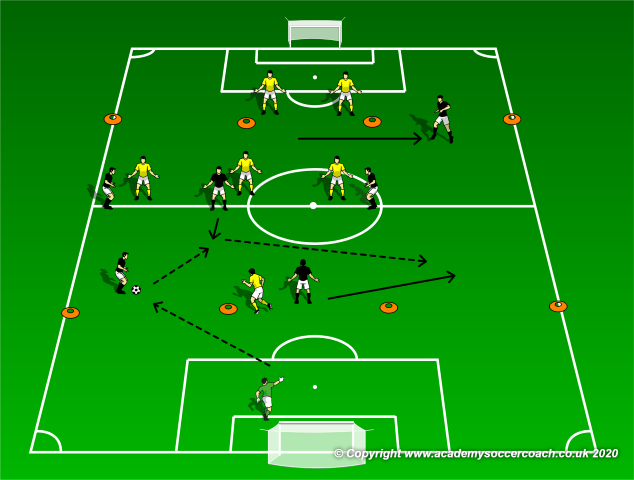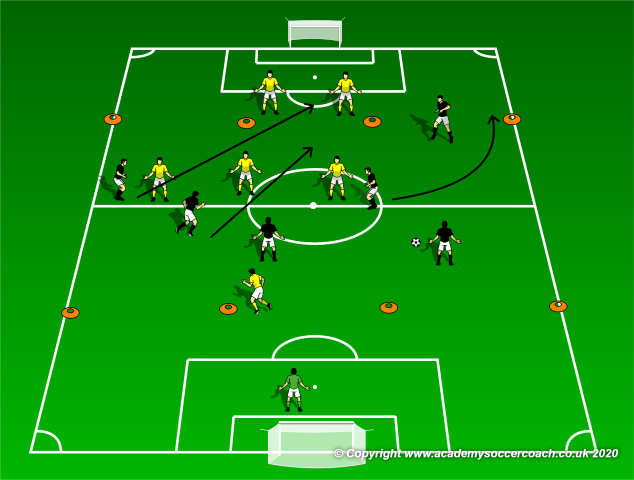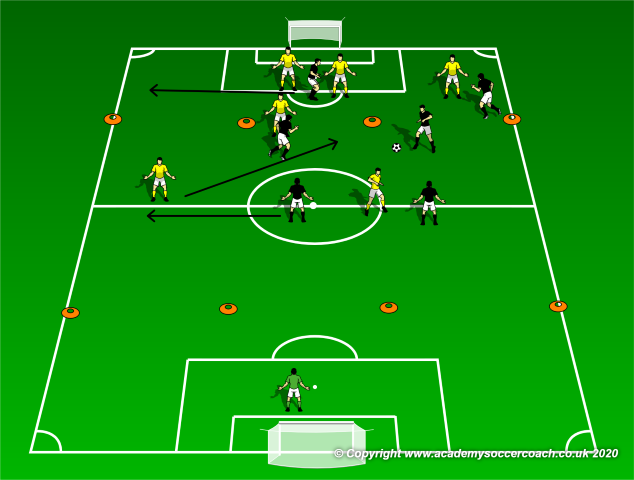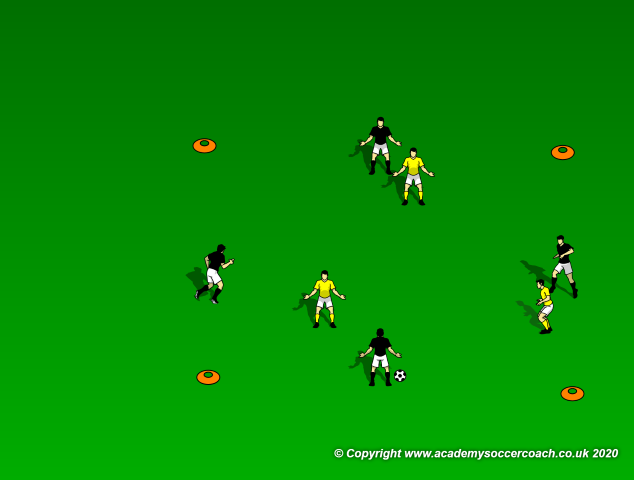By Mike Smith
Question - We play 7v7 in our U12 league here in Sweden. We run a 2-3-1 and want to train build up play from the back. We also need to work on attacking from this system as well. Are there some drills which help with both?
The only real issue with build up from a 2-3-1 is the lack of width at the back. This is only really important if you consider switching the ball across the back “ build up”, which I do not. Build up play is more about setting your opponent up with your movement, and building your formation for waves of attacks by utilizing active back line players –( and an attack is what we are building). Proper build up is achieved through the midfielders supporting the back line with good shape and passing angles combined with some deception and support from the top line. Switching can be part of this, and extra numbers in the back make the switching part easier, but there is plenty of build up which can be done with a 2 player back line – and then a 3 player back line when play is 11 v 11.

The key to being able to build up is using a single player advantage. In the diagram above the keeper makes a distribution to the open back, who is supported by the central midfielder, the other back AND the lone forward who has moved out to attempt and draw the yellow defenders too far out. IF the defender takes the bait, the center will be wide open, However, we are going to assume the defender holds and leaves the attacker in the wide forward space open.

A bit of movement shows the advantage gained by the attacking side ( above ).
Below shows the finished product, an open player with possession at an attacking distance. An isolated defender ( shown with a movement arrow ) and attacking players in supporting position to repeat the process ( also shown with movement arrows). This assumes the overlapping player from the diagram above is tracked by a midfielder. Should the defensive side not track the overlap, then the attacking side has a 3 v1 to goal.

This is the drill I run to work on both build up and attack as all the elements for both are there. This is great on a short field – I use it for my high school teams as a small sided game. The important aspects here are the orange markers. These are placed to create two sections divided by the half line. Note at every step there are at least 4 attacking players in each section. When the build up starts, the mids MUST come into the same section as the back line players. When the ball is transitioned up the field, the back line MUST come up and support the attack. The back line players are the critical piece as they must be active in both possession and attack. When I teach this to young players I often make the distinction between – building from the back – which many players feel represents an area of the field and building WITH the back – meaning with back line players active in attack and possession.
Prior to running the set up above, where the balls are started from the keeper and play if free flowing, I would put my players in grids ( shown below ) with one group having one more player than the other and just ask them to keep the ball with in the marked area. As mentioned before, the key to build up is the team always being able to create and use one open player.

Coaching Points
Make sure your players are active with their movement and communication when playing keep away( above ) and during the build up activity. When they transfer to the larger activity, make sure the focus is on using the open player combined with deceptive movement at the top of the formation. This should lead to plenty of chances inside the 18. As the build up starts with the open back, it should end with an open shot!
By Mike Smith
Currently the Head Coach for University Heights Academy Boys Soccer in Hopkinsville, KY , Mike is in his 14th year as a high school head coach with 23 years coaching experience overall and 34 year as a student and fan of the game. He holds a USSF D License.


